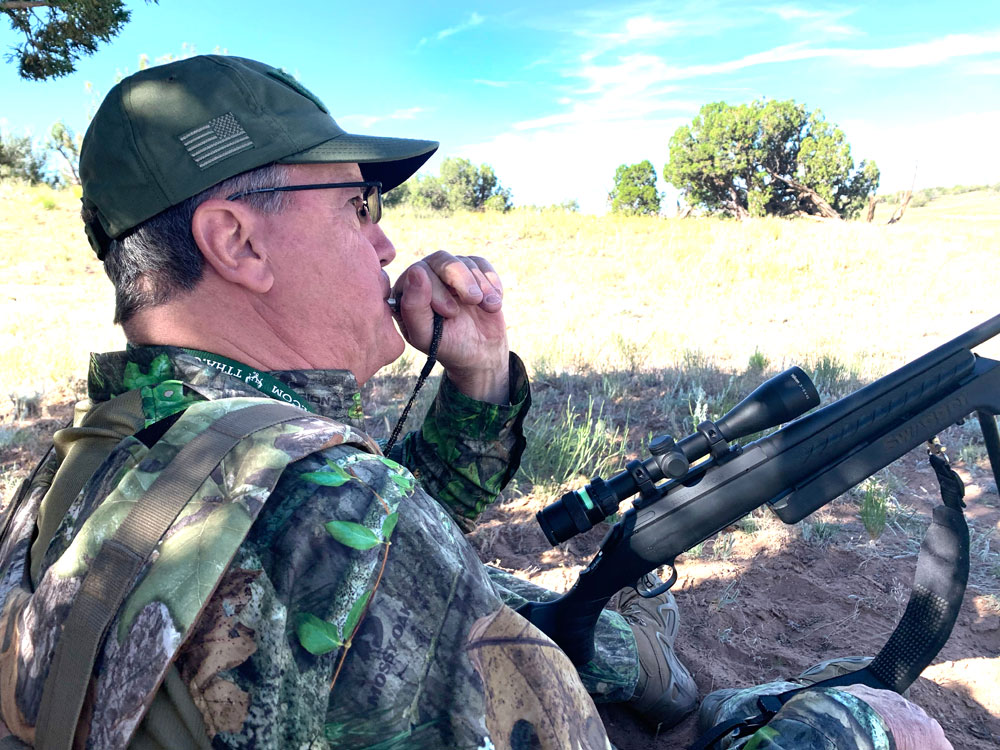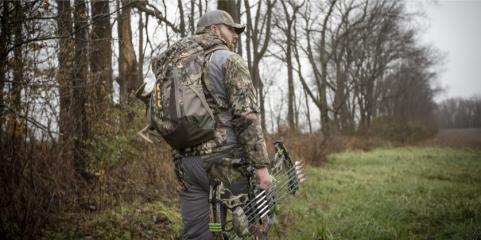provided by John E. Phillips
One of the hunting sports that has been growing by leaps and bounds is predator hunting. Predator hunting serves several purposes. It’s a way to take the animals that prey on deer, turkey, rabbits, quail and squirrels to help increase the population of these game animals. Too, harvesting predators is a way to harvest fur bearers and earn extra money during this pandemic. In many states, hunting predators has a long season, and you can hunt predators at night as well as in the daytime. Mossy Oak Pro Gary Roberson of Menard, Texas, the president of Burnham Brothers Calls, has been there from early predator calling all the way up to the newest innovations in predator callers. Roberson has just written a new book, “Eyes Front: 60 Years of Hunting the Hunters,” available from Burnham Brothers that contains six chapters on rattling whitetails, 10 chapters on calling turkeys and the rest of the book on calling predators – starting with the basics and continuing to the latest information on ultrasonic callers.

I was about 10 years old when I called in my first coyote in 1963. I’d started predator calling when I was about 8 or 9 years old. If I’d called in a coyote before 1963, I never saw him. My brother and I had quit hunting so much at night, due to our poor lighting systems. Those handheld flashlights that took two batteries weren’t very bright and didn’t shine very far. That was the only light that anyone had back in those days, unless you could afford to get a Rayovac lantern that was powered by a 6-bolt battery.
We would start calling early in the morning at first light and then just before evening and dark falling. We would sit at the edge of a Sendero (a cleared road that ran through thick brush). One afternoon I called a coyote out of the brush and onto the edge of the Sendero. I was hunting by myself, and the coyote was only 20 steps from me. I was sitting off the back of the brush on the Sendero looking right and left, and I shoot left-handed. This coyote came up from my right, right in a spot where I could make a clean shot. The coyote looked at me and couldn’t understand what I was. I raised my rifle very slowly, so that I didn’t spook the coyote. Once I got the gun to my shoulder, I took steady aim and shot the coyote in the head.
At that time, that coyote was the biggest hunting trophy I ever had taken. I’d taken deer before, but for me, the coyote was a bigger trophy. In those early days, I’d taken numbers of foxes and raccoons, but I never saw a coyote, much less took one. My family didn’t have any money to mount a coyote, so I didn’t consider doing that. In those days, if we killed a coyote, we’d skin them and sell the fur if their coats were prime. Any bobcats we took, we’d skin them and sell the fur.
My brother and I weren’t just conservationists harvesting predators to prevent them from eating livestock. We hunted predators to sell their hides and make money. While I was in high school and college, between trapping and hunting, my brother and I might make $1500-$2000 during the Christmas break (when we were out of school) selling predator hides. That was a whole lot of money back in those days in the early and middle 1970s.



























